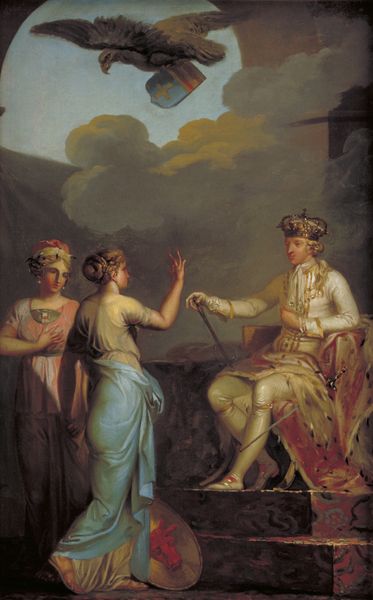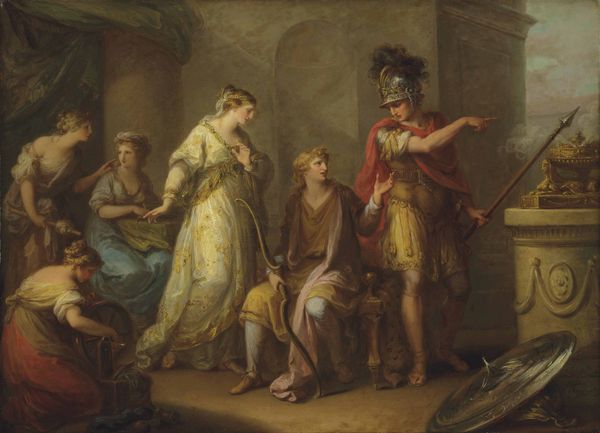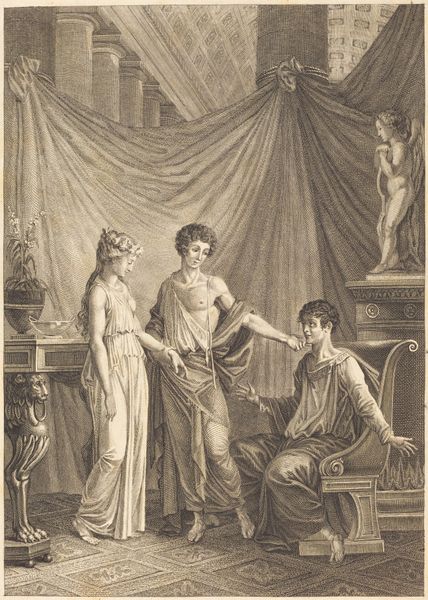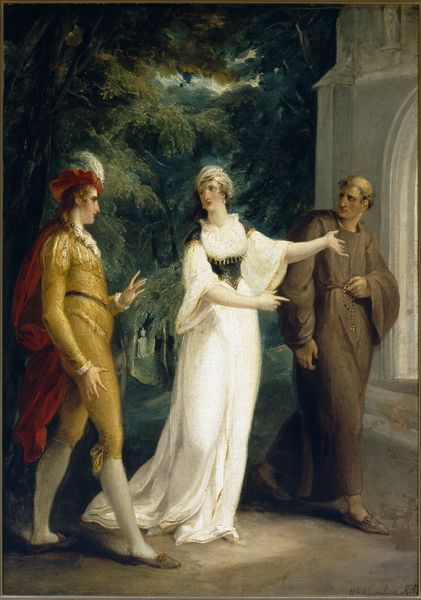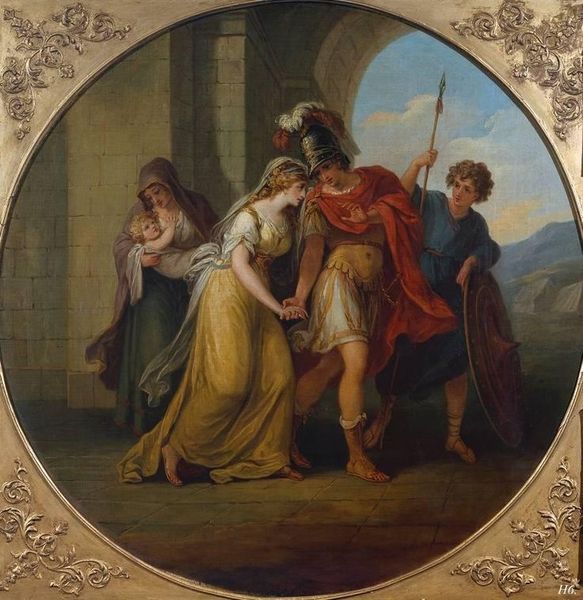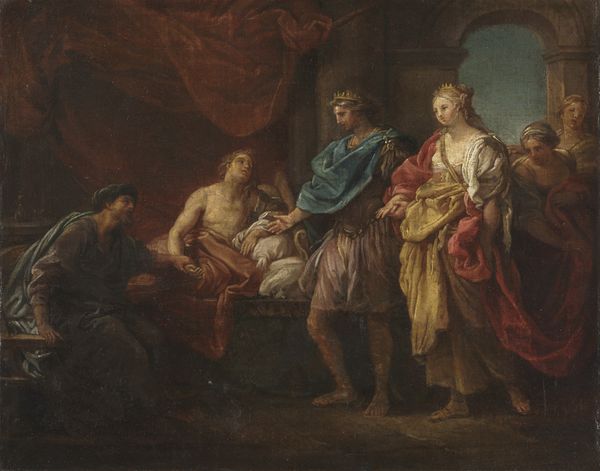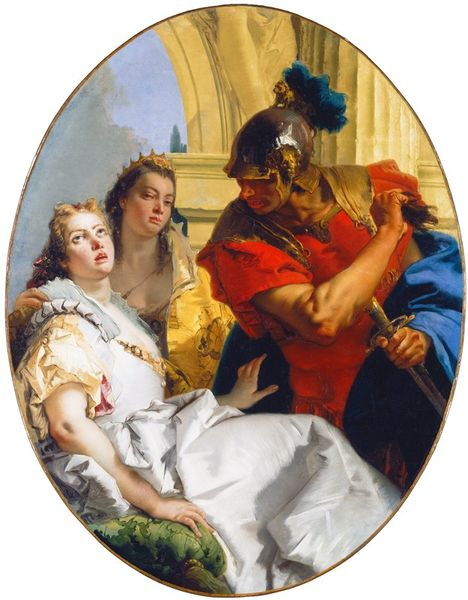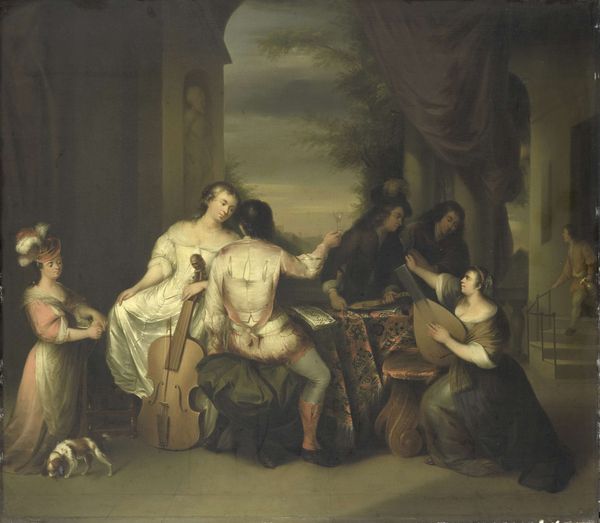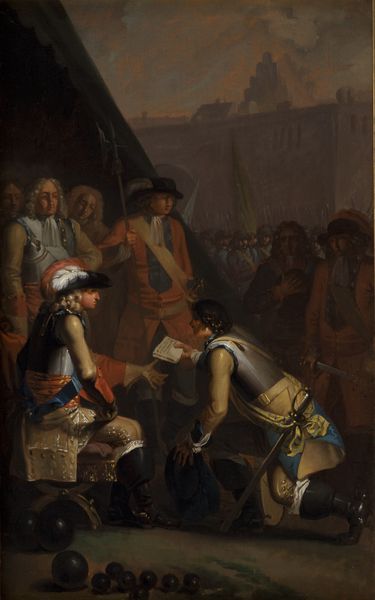
painting, oil-paint
#
gouache
#
neoclacissism
#
narrative-art
#
painting
#
oil-paint
#
figuration
#
history-painting
Dimensions: 62.5 cm (height) x 37 cm (width) (Netto), 72.5 cm (height) x 47.1 cm (width) x 5 cm (depth) (Brutto)
Editor: Here we have Nicolai Abildgaard’s oil painting "The Abolition of Adscription in 1788", created around 1790. I am immediately drawn to the muted color palette, the stillness of the figures and their placement, creating almost a triangular composition within the rectangular frame. How do you interpret this work? Curator: Focusing solely on its visual elements, the piece presents a study in controlled composition and tonal balance. The artist employs a subdued palette of whites, ochres, and muted greens to convey a sense of gravity. The interplay of light and shadow defines the forms and guides the viewer's eye towards the central figure of the king. How do you perceive the artist's use of line in defining the subjects? Editor: It's very sharp and clean, I’d say. It makes the king look statuesque. What about the way the figures are grouped? The two women behind the king almost seem to mirror each other, creating this rigid symmetry. Curator: Precisely. Abildgaard utilizes geometric forms and bilateral symmetry to reinforce the thematic content. Consider how the verticals of the columns contrast with the curves of the figures. Also note the subtle tension between the kneeling man, and the distant cold king. Can one find the link without knowing the artwork title? Editor: You mean the material the man brings before the king: perhaps the grains being offered represents the "adscription" that's being abolished? Curator: That may be possible; by placing it as such, Abildgaard is clearly attempting a synthesis of classical compositional techniques with contemporary political subject matter, resulting in a work that operates on both formal and allegorical levels. Editor: This lens has offered me fresh appreciation to see it merely on its own artistic and intellectual merit, less the context and history. Curator: Indeed. Visual rhetoric has layers.
Comments
No comments
Be the first to comment and join the conversation on the ultimate creative platform.
